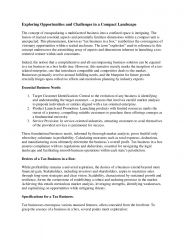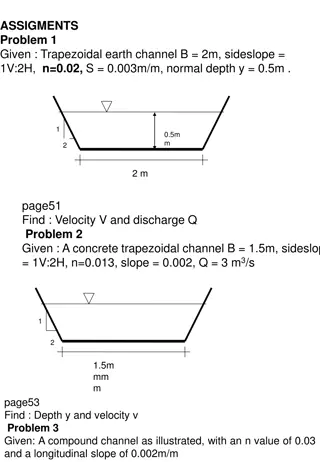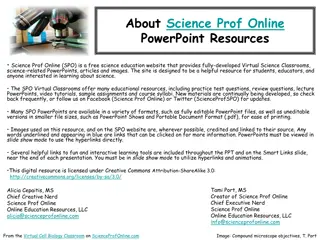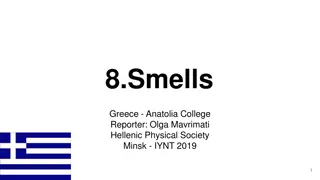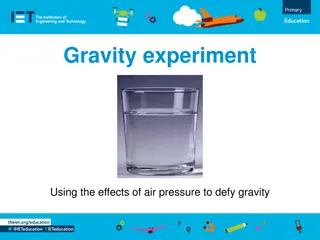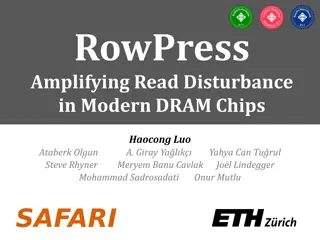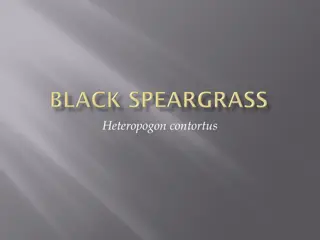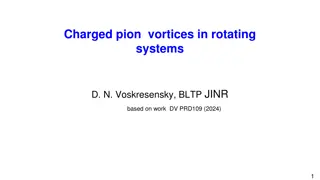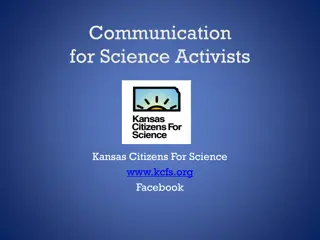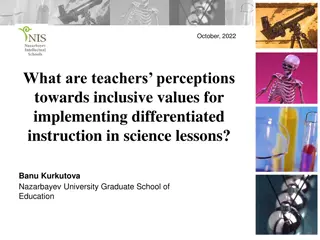Explore and Analyze an Intriguing Phenomenon in Science Class
In this engaging science activity, students are prompted to observe a video demonstrating a unique phenomenon involving mirrors and reflections. Through a structured process, they document their observations, questions, and initial explanations. The students then create diagrams to illustrate their understanding of why certain reflections occur the way they do. Finally, they compare diagrams with partners and discuss the important components required for investigating the phenomenon using a scale model. The session concludes by reflecting on the concept of scale models in everyday life.
Uploaded on Sep 15, 2024 | 0 Views
Download Presentation

Please find below an Image/Link to download the presentation.
The content on the website is provided AS IS for your information and personal use only. It may not be sold, licensed, or shared on other websites without obtaining consent from the author. Download presentation by click this link. If you encounter any issues during the download, it is possible that the publisher has removed the file from their server.
E N D
Presentation Transcript
Slide A Explore an Interesting Phenomenon Make a 2-column chart on a blank page on the left side of your science notebook and record what you notice and wonder about. Watch the video closely and record things you notice and wonder about. INDIVIDUAL WHOLE CLASS INDIVIDUAL WHOLE CLASS
Slide B Share Noticings and Wonderings What did you notice happening in the video? What did you wonder about?
Slide C What do we think is happening? Turn and Talk Turn and Talk Why do the adults see the music student? Why does the music student see themself and not the adult?
Slide D Initial Explanations What parts or components from the scene in the video do we think are important for explaining the phenomenon? What s not important? What are we not certain about?
Slide E Develop a Diagram Write these two questions in your science notebook: Why do the adults see the music student? Why does the music student see themself and not the adults? Create a diagram to explain as much as you know about the two questions. Mirror-Window Diagram Mirror-Window Phenomenon Why do the adults see the music student? Why does music student see themself and not the adults? Include all the important parts we agreed on and label them. Use pictures, symbols, and words to explain how the parts interact to cause the phenomenon. Record questions that you have if you become stuck.
Slide F Compare Diagrams 1. Each partner shares their diagram. 2. When it is your turn, turn your science notebook around so your diagram faces your partner. 3. As you notice things about each diagram, record the following: Place a by parts of your diagrams that are similar. Place a ? by parts of your diagrams that are different or where you are less certain.
Slide G Navigation If we want to investigate the phenomenon using a scale model, what are the important parts we need to include in the scale model?
Slide H Navigation A scale model is a physical representation of something in the world. It can help us explain phenomena or solve problems. Where have you seen or used scale models in your life?
Slide I Mapping the Model to the _______ This part of the box model ... is like this part of the real world ... because ... and is not like it because ...
Slide J Investigate Using the Box Model 1. Turn on the flashlight for Room A. Add the ceiling, walls, and an overhead light to room A. Draw a line below your last noticing from the video. Add noticings from the Box Model Investigation to your chart. Locate your Notice and Wonder chart. 2. Peek through the viewing hole for Room A. Record noticings to your Notice and Wonder chart. Peak through the viewing holes for room A and record what you see. Mirror-Window Diagram Mirror-Window Phenomenon Why do the adults see the music student? Why does the music student see themself and not the adults? 3. Peek through the viewing hole for Room B. Record noticings. Then peak through the viewing holes for room B and record what you see. Video 4. Turn off the flashlight. Box model 5. Add wonderings to your chart. 6. If time allows, remove Room A from the box model.
Slide K Noticings from the Box Model Investigation What was similar between what you saw in the video and what you saw in the box model? What was different? What new things did you notice in the box model?
Slide L Limitations of the Box Model If we use this box model to test ideas about the one-way mirror phenomenon, what differences between the box model and the real world shown in the video could be important to keep in mind?
Slide M Exit Ticket Look at your Notice and Wonder chart and your diagram. What is one idea you want to bring to our class discussion next time to help us explain the phenomenon?


